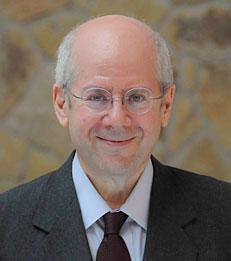Opinion
The financial crisis, ten years on
—


...what made the crisis so deep and long – and so damaging to the global economy – was that the losses hit a financial system that was inadequately capitalised from the start.
By Kim Schoenholtz and Stephen Cecchetti
“The complete evaporation of liquidity in certain market segments of the US securitisation market has made it impossible to value certain assets fairly regardless of their quality or credit rating.”
BNP Paribas press release, 9 August 2007
In his memorable review of 21 books about the 2007-09 financial crisis, Andrew Lo (2012) evoked Kurosawa’s classic film, Rashomon, to characterise the remarkable differences between these crisis accounts. Not only were the interpretations in dispute, but the facts were as well: “Even its starting date is unclear. Should we mark its beginning at the crest of the US housing bubble in mid-2006, or with the liquidity crunch in the shadow banking system in late 2007, or with the bankruptcy filing of Lehman Brothers and the ‘breaking of the buck’ by the Reserve Primary Fund in September 2008?” (Lo 2012)
In our view, 9 August 2017 marked the 10th anniversary of the start of the financial crisis. That was the day that BNP Paribas announced they were suspending redemptions because their fund managers could not value the assets in three mutual funds. With a decade’s worth of hindsight, we view this anniversary as a propitious moment to review both the precursors and the start of the worst financial crisis since the Great Depression of the 1930s.
Read full article as published by VoxEU.
___
Kim Schoenholtz is Professor of Management Practice in the Department of Economics and Director of the Center for Global Economy and Business.
BNP Paribas press release, 9 August 2007
In his memorable review of 21 books about the 2007-09 financial crisis, Andrew Lo (2012) evoked Kurosawa’s classic film, Rashomon, to characterise the remarkable differences between these crisis accounts. Not only were the interpretations in dispute, but the facts were as well: “Even its starting date is unclear. Should we mark its beginning at the crest of the US housing bubble in mid-2006, or with the liquidity crunch in the shadow banking system in late 2007, or with the bankruptcy filing of Lehman Brothers and the ‘breaking of the buck’ by the Reserve Primary Fund in September 2008?” (Lo 2012)
In our view, 9 August 2017 marked the 10th anniversary of the start of the financial crisis. That was the day that BNP Paribas announced they were suspending redemptions because their fund managers could not value the assets in three mutual funds. With a decade’s worth of hindsight, we view this anniversary as a propitious moment to review both the precursors and the start of the worst financial crisis since the Great Depression of the 1930s.
Read full article as published by VoxEU.
___
Kim Schoenholtz is Professor of Management Practice in the Department of Economics and Director of the Center for Global Economy and Business.
